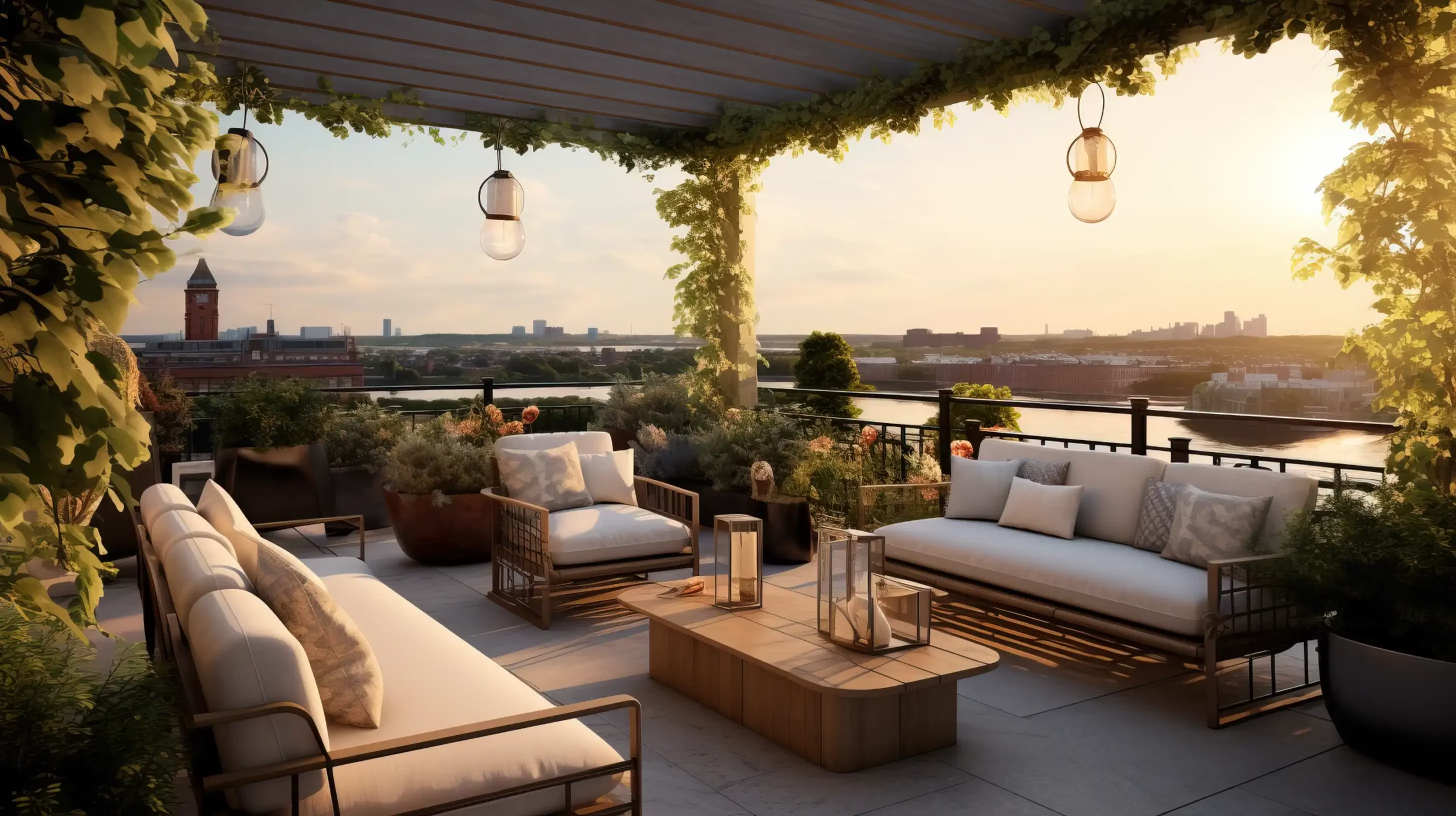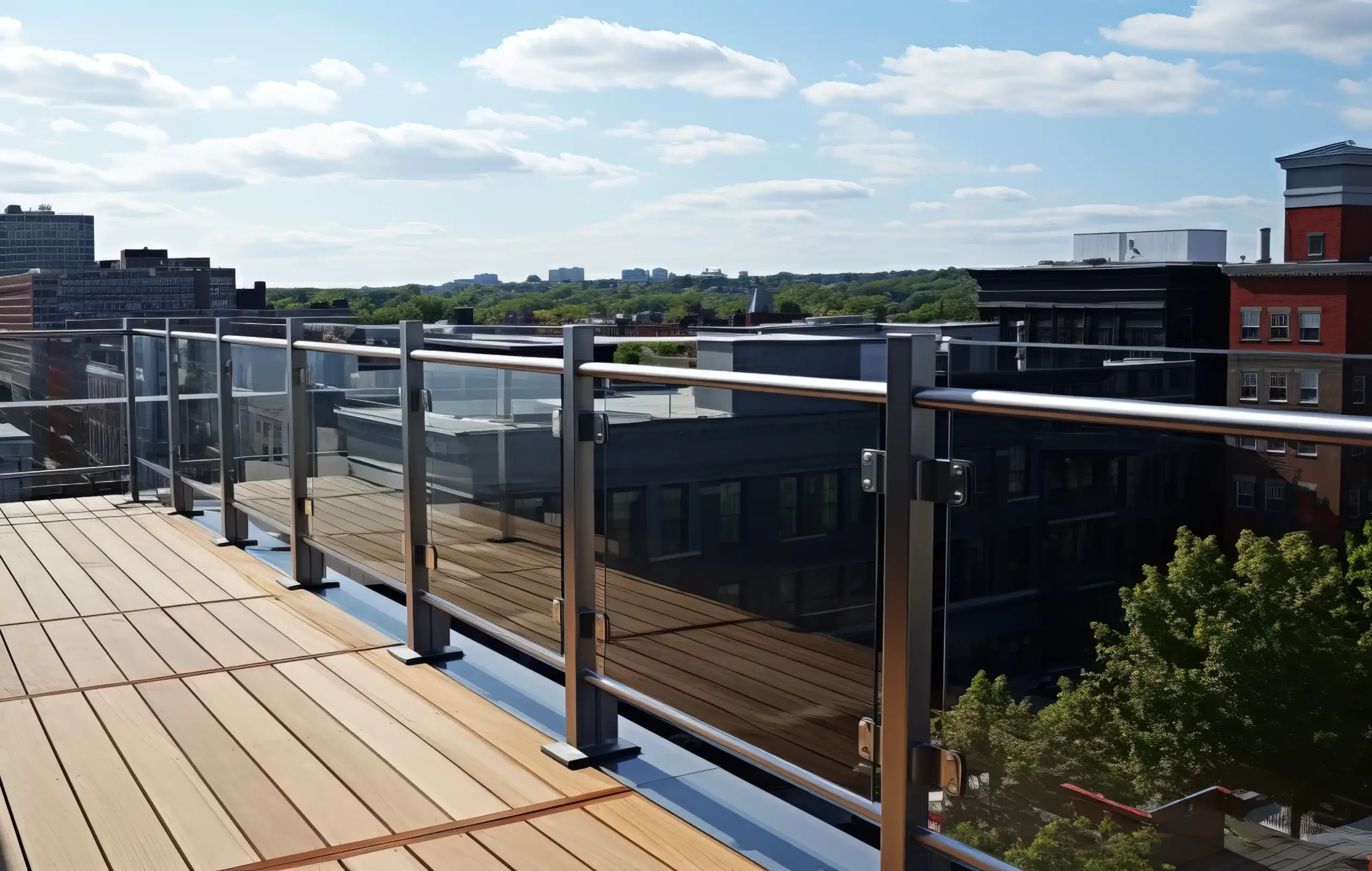Create an Inviting Roof Deck to Expand Your Outdoor Living Space
Create an inviting deck roof to expand your outdoor living space. Explore top deck roof ideas for shade, privacy, and a dry, spacious patio.
Installing a roof deck is one of the best ways to add valuable outdoor living space to your home. A well-designed deck with an overhead roof can transform an unused rooftop into a relaxing oasis, providing you with the perfect spot for entertaining, dining al fresco, sunbathing, urban gardening, and more. Discover deck roof ideas and gain all the knowledge you need to build a durable and waterproof pergola on your rooftop.
A roof adds livable square footage and gives you more room to spread out, play, and relax outside. It provides shade and shelter on sunny and rainy days, expanding the scope of what you can do outdoors. The roof structure supports the weight of the deck, allowing you to fully furnish and utilize the space without compromising the integrity of your home. With the right deck and roof designs, a roof deck is an attractive, enjoyable addition that will increase the functionality and value of your property.

What Are the Benefits of Installing a Deck with Roof?
- More outdoor living space to relax, dine, and entertain
- Protection from the sun, rain, and other elements
- Increases property value by adding usable square footage
- Creates an eye-catching design feature
- Can be customized with planting beds, cooking areas, lighting, audio, and more.
- Provides views and connection to the outdoors
What Factors Should You Consider When Building a Roof?
Building a roof is a complex process that requires careful planning and attention to detail. Here are some key factors to consider before you begin your project:
Structural Integrity and Load Bearing Capacity
- The existing roof structure must be evaluated to ensure it can support the weight of a deck.
- May require reinforcing roof joists, beams, and other structural elements.
- Building codes provide specific requirements for live and dead loads.
Weatherproofing and waterproofing
- Must be designed to prevent water damage and leaks.
- Proper roofing membranes, flashing, and slope for drainage are critical.
Railings and Access Points
- Railings provide safety and meet code requirements.
- Stairs, ladders, or roof hatches allow access to the deck.
Sun Exposure and Shading Elements
- Consider sunlight patterns to place shade structures and plantings.
- Allow sunshine to reach some areas of the deck for warmth.
Furnishings, Planters, and Decor
- Plan space for seating, dining, potted plants, lighting, audio, and more.
- Consider the weight of decorative features and furniture.
Compliance with Building Codes and Zoning
- Secure the necessary permits and ensure the deck complies with regulations.
- Consider setbacks, allowable features, safety codes, and more.



What type of roof works best for a deck?
You can build a deck on various roof types, but some work better than others.
- Flat roofs are ideal for decking since the flat surface readily supports weight.
- Gable roofs: Allow decks on one or both sides of the slope.
- Hip roofs: compatible on one side, multiple sides, or the center hip.
- Shed roofs: decks can be built on sloped sides with proper flashing.
Low-slope roofs are best since they naturally create usable deck space without complex enclosures. Other roof types work but may need reinforced structures to create a flat platform.
What is the best material for a waterproof floor?
Choosing the right decking material is crucial to creating a waterproof surface that stands up to outdoor exposure. Here are the top options:
- PVC and composite: durable, weather-resistant, low maintenance.
- IPE Wood, a beautiful tropical hardwood, lasts 40+ years.
- Aluminum: lightweight and won’t warp, crack, or splinter.
- Floor Tiles: Interlocking tiles are available in many styles.
- Coated Woods: treated lumber or waterproof wood stain.
Composite lumber is one of the most popular choices. PVC and aluminum are seamless options. IPE wood provides an elegant look. Tiles allow creative patterns.
How Do You Attach a Deck to a Flat Roof?
Here is an overview of how to attach a deck to a flat roof:
- Reinforce the roof structure with added joists to handle the load.
- Create sleepers or raised beams on a low-slope roof for deck joists.
- Fasten a weatherproof base layer over the roof as a foundation.
- Attach joists to sleepers to elevate the deck surface.
- Add a leakproof membrane between layers for a watertight seal.
- Locate decking planks over joists.
- Include proper roof flashing and drainage slopes.
- Add railings, stairs, and decorations to complete the deck.
Proper waterproofing and flashing are crucial. An experienced contractor can ensure it is securely attached.
What is the Best Way to Waterproof Under a Deck Roof?
To prevent leaks, applying a high-quality leakproof membrane under the deck is vital. Here are the top leakproof methods:
- EPDM rubber sheets: flexible, seamless, durable membrane.
- TPO membrane: thermoplastic sheets resist UV rays.
- PVC membrane: lightweight, easy-to-mount panels.
- Built-up roofing: layers of asphalt, felts, and gravel topcoat.
- Liquid coatings: seamless elastomeric acrylic or polyurethane.
- Incorporating gutters helps channel water away from the structure.
EPDM rubber is the most popular choice. Multi-layer built-up roofing also provides a bombproof seal. Professional installation is a must for reliability.
How Do You Frame a Roof?
Here are the basics of framing a roof deck:
- Add support posts and beams if needed to reinforce the roof.
- Mount raised sleepers perpendicular to the roof edge
- Attach ledger boards to the roof edge for outer joists.
- Bolt joists to sleepers to elevate the deck surface.
- Space joists based on decking material span rating
- Allow a 1-2″ gap between the roof and joists for drainage.
- Frame stair stringers and rail posts as needed.
- Use metal connectors to firmly anchor the framing.
Proper joist sizing and spacing prevents sagging. The structure ties everything together for a structurally sound deck.
What Size Joists Do You Need for a Roof?
Joist size is determined by the deck’s span length and the spacing between joists.
- Smaller joists can be used at 16” spacing.
- For 12” spacing, use thicker joists or reinforce with blocking.
- Longer span lengths require larger joist dimensions.
- Standard sizes are 2×6, 2×8, 2×10, or 2×12 lumber.
- Use joist spans rated for deck loading.
- Avoid splicing joists if possible for strength.
For a 10′ x 10′ deck, 2×8 joists at 16” spacing often suffice. For larger decks, 2×10 or 2×12 joists are better. Consult building codes for requirements.

How do you attach railings to a roof?
Handrails are crucial safety features. Here are some tips for installation:
- Use heavy-duty metal or wood posts anchored to the framing.
- Space posts based on length and local codes
- Set the post height above the deck surface per code.
- Attach top and bottom rails between posts.
- Use galvanized brackets and hardware for rot resistance.
- Infill railings with cable, glass panels, or balusters.
- Ensure handrails meet weight capacity and spacing standards.
Correct handrail height and infill spacing prevent falls and injuries. Careful installation also improves aesthetics.
What Kind of Roof Can You Put on a Deck?
There are several suitable roofing options to cover your deck:
- Patio covers: light aluminum structure with polycarbonate panels
- Pavilion style: wood-framed roofs with shingled or metal sheathing
- Pergolas: open wood slatted structures let some sun or rain in.
- Canopy: Fabric canopies block the sun while allowing airflow.
- Louvered roofs: Adjustable aluminum panels provide shade control.
- Glass roofs: transparent or tinted panels maintain views.
The roof you choose depends on your budget, style preference, and how much sun and rain protection you need.
How Do You Build a Waterproof Deck on a Low-Slope Roof?
Follow these steps to build a leakproof deck on a roof:
- Plan deck layout and access. Get the necessary permits.
- Reinforce the roof structure with added support pillars.
- Mount raised sleepers perpendicular to the roof edge.
- Attach ledger boards and joists to create a deck structure.
- Cover the roof surface with a leakproof EPDM rubber membrane.
- Install high-quality, leakproof decking planks.
- Include proper flashing around edges and fixtures.
- Slope the deck slightly for drainage. Add drains if needed.
- Install handrails, stairs, lighting, and other features.
Proper leakproofing and drainage prevent leaks. Hire a professional roofer experienced in deck installation.

What Can You Put on a Roof?
In addition to decks, here are other great features for roofs:
- Deck gardens and container planting beds.
- Green roofs with drought-resistant vegetation.
- Pools, spas, and water features.
- Dining areas, kitchens, and bars for entertaining.
- Cozy seating areas with fire pits or chimineas.
- Small sheds for storage or recreation spaces.
- Shade structures like pergolas, sails, and umbrellas.
- Solar panels or wind turbines.
With some creative planning, a flat roof can be transformed into a multifunctional outdoor oasis!
Key Takeaways for Building a Successful Roof
- Evaluate the roof structure to ensure it can support the deck load.
- Create a raised structure with adequate joists and beams.
- Use quality leakproof and drainage systems to avoid leaks.
- Choose durable decking materials made for outdoor use.
- Follow building codes and get the necessary permits.
- Carefully attach handrails and access stairs or ladders.
- Weatherproof and seal all connections and fasteners.
- Add overhead roofing, plants, furnishings, and lighting as desired.
- Hire experienced contractors for the best results.
With careful planning and construction, an inviting deck can increase your home’s outdoor living space as well as its value. Investing in this exciting upgrade will provide an elevated outdoor retreat for years to come.

Looking to get started on deck design & build packages, but not sure where to begin? Contact us.
Visit our website to find a location closest to you, or to contact a deck designer today!
Follow us on Facebook and Instagram for more deck design ideas.
